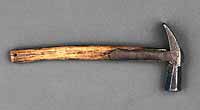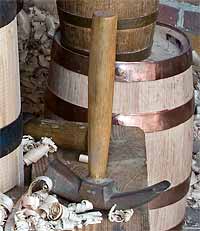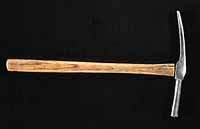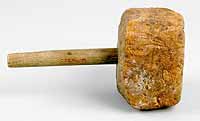Page content
Hammers
Hammers have been used for thousand of years to drive nails and wooden pins, to pound together wooden parts, and to position fittings like barrel hoops. Eighteenth-century toolmakers produced many types of hammers.
Specialized hammers of many types were made for particular jobs. Different sizes and designs suited them for tasks ranging from delicately driving in brads to secure small moldings to pounding home the large wooden pegs used to hold together building and ship frames.

Claw hammers were common. Like many hammers, they were dual-purpose tools. The face was used to drive nails, while the claw was used to pull them.
The peens of riveting hammers were used to spread the ends of rivets or to drive brads in tight spaces.
Shipbuilders' pin mauls were used to drive and countersink spikes and wooden pins.

Lathing hammers had a blade for splitting and cutting lath (wooden strips over which plaster was laid) and a hammer for nailing it into place.


